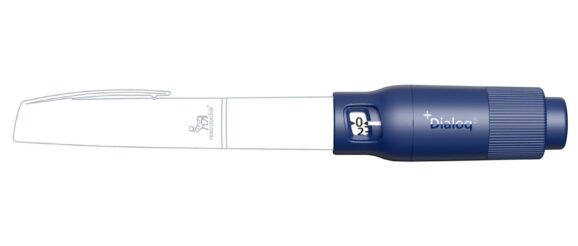Innovation Is Critical to Stop Disparities in Diabetes Care | MedPage Today

This post originally appeared on
Having spent over 30 years of my career in diabetes, first as a practicing diabetologist and later as a diabetes researcher, I’ve met many people with diabetes. And while diabetes care has evolved significantly over that time, I’m amazed that for many people, daily insulin management remains just as complex and manual as it was all those years ago, particularly for individuals with type 2 diabetes (T2D).
While I was involved with clinical trials of many new drug products for diabetes over the years, the only improvement in insulin delivery for people with T2D was the introduction of mechanical insulin delivery pens in the 1980s and 1990s. Technology advances for insulin delivery have been confined to insulin pumps, which are used primarily for people with type 1 diabetes (T1D).
More than 90% of people with diabetes live with T2D, yet most of the industry’s innovation is focused on complicated systems for “power users” with T1D. This leaves people with T2D struggling with the complex requirements of diabetes management with too few tools to help. Research has shown that self-management of diabetes is challenging for many people with type 2 — and many feel they do not receive enough support from their clinicians or families.
It is important to recognize and raise awareness of the disparities involved and focus on what healthcare professionals (HCPs) and diabetes innovators can do to provide better care for the underrepresented and more prevalent diabetes population.
The foundation of diabetes treatment involves:
Taking insulin injections requires checking blood glucose levels, counting carbohydrates, and calculating basal (long-acting) and bolus (rapid-acting) insulin doses. Doing calculations at every meal can be complex and overwhelming. Many people who require multiple daily injections of insulin still maintain manual logs of their insulin doses and glucose readings. Not only are these logs difficult to maintain, but they also leave room for inaccuracies and limit clinician visibility of patient data.
The complexity of insulin management often leads to poor adherence. People with T1D have more tools at their disposal than those with T2D, such as continuous glucose monitoring access, insulin pumps, and automated insulin delivery systems.
Suboptimal insulin use is widespread among people with diabetes, with insulin doses routinely missed or mis-timed. Insulin pumps are clinically proven to provide better glucose control than multiple daily injections, but due to the complexity of the device and cost/reimbursement barriers, less than 1% of people with T2D currently use insulin pumps. Over time, high glucose levels can lead to severe complications such as kidney failure, cardiovascular disease, nerve damage, and blindness.
Most people with diabetes typically see their clinician only once a quarter, giving clinicians limited visibility into the patient’s glucose history and insulin doses. Because clinicians don’t have much visibility as to when or how much insulin patients are self-administering, and because an A1C check only reflects a 3-month average glucose level, it becomes difficult to understand the patient’s day-to-day glucose variability and response to their treatment plan.
After patients are prescribed initial dosing, therapy settings almost always require adjustments based on response. When I speak with endocrinologists and diabetologists, I regularly hear about their frustration with the gap in communication between themselves and their patients. Which is why discussions between patients and their HCPs and teams are so important to mitigate issues and miscommunications – and why there is a need for tools that will give providers better visibility into how their patients are managing their disease.
Steps Toward Solutions
It’s important to continue to raise awareness about the ongoing struggles the T2D patient population faces. Acknowledging that there are treatment inconsistencies and inequalities when comparing T2D and T1D is a critical step. We owe it to this patient population to better understand the challenges they face, particularly in insulin treatment, and learn how we as clinicians can help make those challenges more bearable, as well as how to reduce or eliminate them.
Innovators in diabetes have an opportunity to do more to address disparities faced by patients with T2D and support those with more urgent needs by investing in innovative technology. The key is to deliver simple, easy to use, connected, and comprehensive solutions to improve care for those who have been overlooked by diabetes innovation.
Simplicity enables holistic care; solutions that are integrated and easily accessible by a clinician will address current gaps in care. In addition, employing smarter technology will drive the industry forward. An example of holistic technology is a smart insulin pen cap system that can recommend prescribed insulin doses, track when doses are taken, and provide helpful reminders, alerts, and reports, making the many tasks a person with diabetes has easier and less stressful.
HCPs also have an important role to play. Technology is constantly advancing, and clinicians need to take time to understand and explore how these new technologies may enable their patients with T2D to achieve better health outcomes.
James Malone, MD, is an endocrinologist and healthcare executive.
This post appeared on KevinMD.
